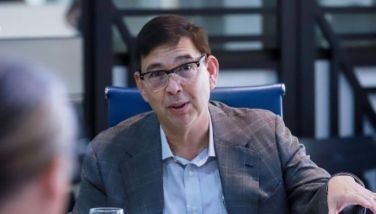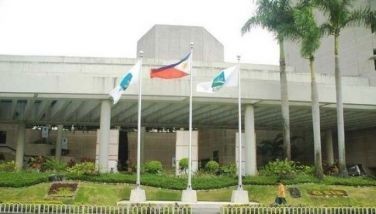Never-ending problem


When digital navigation site TomTom labelled Metro Manila as the most traffic-congested in the world in 2023, the Metropolitan Manila Development Authority (MMDA) said this is nothing new.
“The problem with traffic is not just at present. This is a decade-old problem,” MMDA chairman Romando Artes pointed out.
In its 2023 Traffic Index report covering 387 metro areas worldwide, Metro Manila topped the list with a travel time of 25 minutes and 30 seconds for every 10 kilometers of road. The said travel time increased by 50 seconds compared to data in 2022, making it the slowest in the world, TomTom said.
According to Artes, the government has been studying all means to prevent traffic jams from worsening and to eventually lessen them.
He adds that aside from traffic discipline, governments believes more infrastructure and mass transport projects and the decongestion of Metro Manila can help solve the traffic woes.
What is causing the traffic congestion in Metro Manila?
A paper prepared by the Congressional Policy and Budget Research Department of the House of Representatives cited a study by the Asian Development Bank (ADB) in 2019 which found that Metro Manila has the highest congestion level of 1.5 among 278 natural cities with a population greater than five million. The figure is significantly higher than the 1.24 average congestion level of the 278 samples cities.
A congestion level of 1.5 means that 50 percent more time is needed to travel in peak hours than in off-peak hours. Other highly congested cities include Kuala Lumpur in Malaysia, Yangon in Myanmar, Dhaka in Bangladesh, Bengaluru in India and Hanoi in Vietnam, the study explained.
The paper likewise noted that motor vehicle registration in Metro Manila accounts for about 24.2 percent of the 12.7 million MV registrations for the entire country. Of the 3.1 million MV registrations in 2019, 47.8 percent were from motorcycles and tricycles, 21.6 percent by utility vehicles and 16.16 percent by passenger cars.
But the traffic congestion problem is more complex than simply saying there are just too many people and cars and few roads in Metro Manila.
A research paper prepared by Rappler and published in 2020 revealed that the Philippine transport system is car-centric and not mass-oriented, that there is a need for a route rationalization plan for Metro Manila and to fast-track the implementation of mass transit projects, that there is lack of an integrated urban land use and transport planning, that government transport agencies tend to overlap, lack technical competence, and pursue vested interests, among others.
Does the number coding system or bus ban even work? The same paper said that while these may lessen the number of vehicles on the road, it does not follow that people get to their destinations faster.
Meanwhile, a study published by the UP NCTS cited driver behavior (vehicles changing lanes or those running in the middle of lanes), vehicle performance (slow start-up reaction), and physical environment factors as among those that have significant influence on traffic saturation flow rate in Metro Manila.
A report by rapidmts.com says that on average, Filipino drivers commit 70,000 violations monthly based on MMDA’s May Huli Ba database.
To avoid traffic, try avoiding rush hour and leave earlier than usual. Study alternate routes if you are the one driving (take Skyway Stage 3 if you are going from North to South of Metro Manila and vice versa) and use navigation apps like Waze. Take the MRT or the LRT or if you haven’t, download a ride-hailing app, leave your vehicles at home, and book a ride. You can even do car pooling and ride sharing to reduce the number of vehicles on the streets.
Despite new roads and more public transport options, traffic congestion remains a significant concern even for other countries.
Many countries have adopted what is known as a congestion charge so that if you are driving into a city center especially during rush hour, the driver has to pay an additional fee.
I don’t know if our MMDA has this but some countries have what are called smart motorways that employ dynamic systems and monitoring, sometimes referred to as active traffic management, to try and alleviation congestion. The system allows for varying of speed limits or the opening of the hard shoulder to ease traffic flows.
A paper released by the World Economic Forum identified seven ways by which cities around the world are addressing traffic congestion.
Aside from electronic road pricing which charges motorists for entering the central city on weekdays and during peak traffic hours and active traffic management systems that can manage traffic flow and lane use at peak times, countries like Hong Kong use public light buses or mini-buses that offer non-stop service. Then there is the public bike-sharing program. Hangzhou in China for instance has 67,000 public bikes with 3,000 service points that can be rented using either a smart card that can also be used for other types of public transport (maybe like our Beep) or with cash deposit.
But then, there is this study from Wharton School of the University of Pennsylvania which says that urban travel speed is strongly related to a country’s gross domestic product. It revealed that richer countries are faster mainly because their cities have more major roads and wider land areas. And as a country grows richer, congestion on its roads will moderately increase but the quality and the number of the roads will also increase, enabling uncontested mobility or faster travel speed without obstacles on roads.
It cited the United States, which it said is faster than other OECD countries because its cities have lower populations, wider areas, more major roads, and more grid-like road networks. At the other end of the spectrum, Bangladesh is slower than other poorer countries because its cities are crossed by more water bodies, are more populous, and have fewer major roads.
The study noted that what makes a bigger difference than congestion is “uncontested speed,” which is possible on roads that don’t have potholes or obstacles such as cattle or pedestrians. That difference, it said, is why richer countries have faster speeds. While richer countries have more cars are therefore are moderately more congested than poorer countries, that congestion is offset by faster uncontested speed.
It added that cities in richer countries invest more in fast roads, financing that with their higher tax revenues.
The Wharton study recommended for large cities to invest not just in the major roads but also in secondary and tertiary roads that can share the congestion load. It added that poorer countries have to get their basic infrastructure right and have a plan of what the infrastructure will look like in 20 years when their cities have populations that may be two or three times bigger than today.
But then, faster transportation calls for not just more roadways but also lower density so poorer countries should also invest in expanding housing infrastructure away from the highly populated areas, it added.
For comments, e-mail at [email protected]
- Latest
- Trending




























